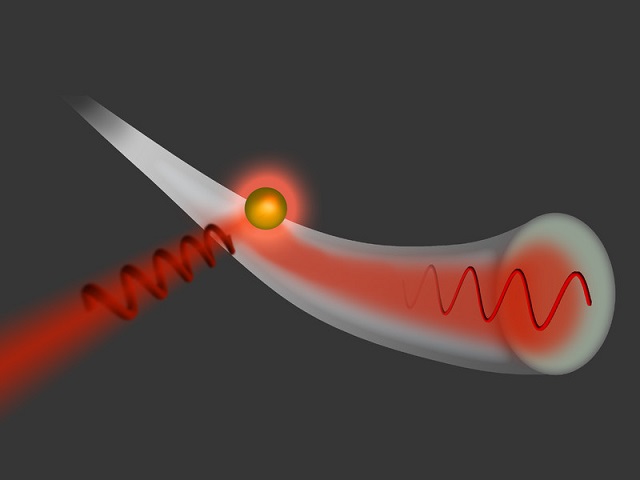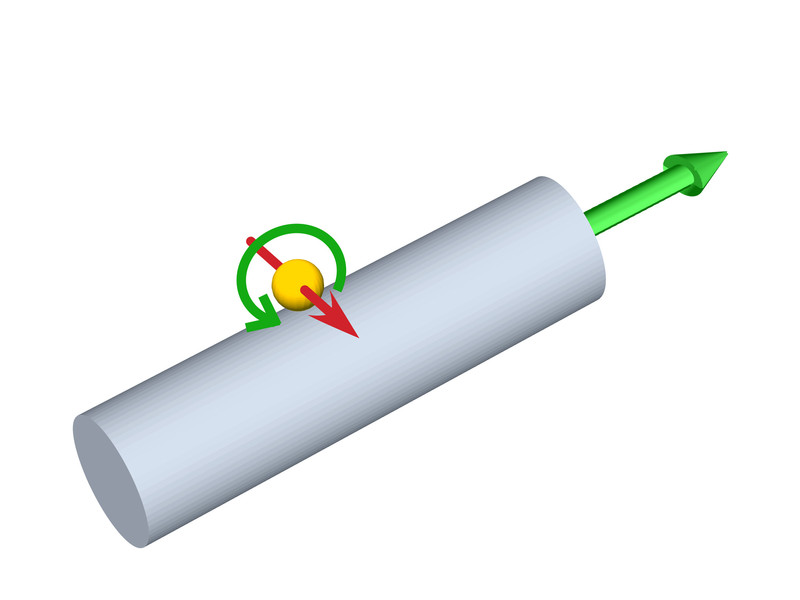 Light hits a gold particle, which then emits light into a glass fibre - into only one direction.
Light hits a gold particle, which then emits light into a glass fibre - into only one direction.
Researchers at the Vienna University of Technology (TU Wien) have developed a new type of optical switch using gold nanoparticles and ultra-thin glass fibres. They utilized the property of spin-orbit coupling of light which enables light to be directed in a single direction.
Particles absorb and also emit light. However, this light is emitted symmetrically in both directions. TU Wien physicists have successfully broken this symmetry. They coupled gold nanoparticles to ultra-thin glass fibres. The nanoparticles emit light into these fibres in a specific manner so that the light travels either in the left or in the right direction.
Light waves possess spin, which is their intrinsic angular momentum. These light waves can also oscillate in different directions like a pendulum. When the waves have a definite direction, it is considered as a “polarized wave”. The polarization changes when the light intensity changes locally.

The rotation of the light wave is coupled to the direction of propagation.
Light normally oscillates in a perpendicular plane with respect to its propagation direction. When the oscillation is in a circular form, it is similar to how an aeroplane propeller moves.
The direction of propagation is denoted by its rotational axis. However, when light goes through ultra-thin glass fibres, it possesses very high intensity when it is inside the fibre, but when it goes outside the fibre, it decreases rapidly. In a manner similar to the movement in a bicycle, the direction of light propagation becomes perpendicular to its spin. The rotation sense of the light field is linked to the direction of motion of light due to the “spin-orbit-coupling of light” effect.
The researchers irradiated gold nanoparticles coupled to glass fibre using a laser, in a particular manner so that it emitted light with a specific sense of rotation. This light in the glass fibre would propagate either in the left or in the right direction. The diameter of the particle, as well as, the diameter of the fibre used by the researchers was smaller than the emitted light’s wavelength.
According to the TU Wien researchers, this new technology holds promise for applications in integrated optical circuits. They have published this study in the “Science” journal.
References